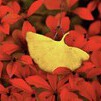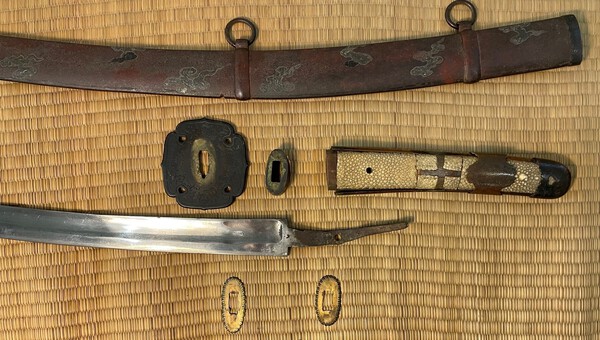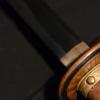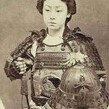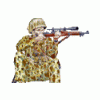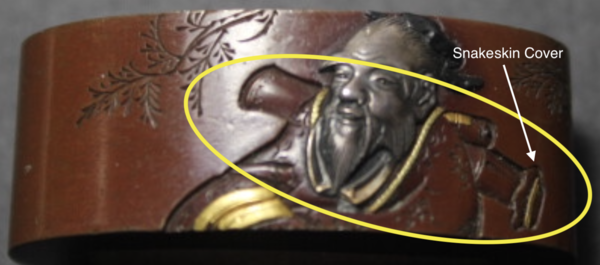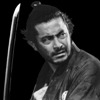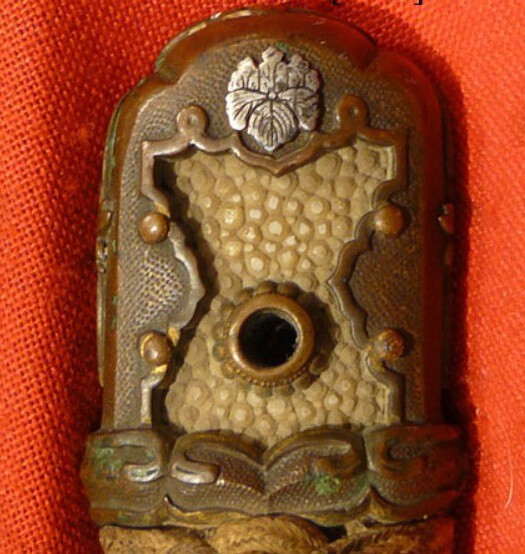Leaderboard
Popular Content
Showing content with the highest reputation on 06/29/2021 in all areas
-
Hummmm Dear Mr. Stephen Thank you very much for mailing and advice As a result of examining the information from you earlier, I was surprised to find two lines of Hagire. Immediately I instructed the staff to withdraw the sword. At the Japanese Sword Museum, hagire examines carefully at the examination stage and informs us of the existence of hagire, but it is surprising that this Emura passed the NBTHK Hozon Token. In the future, we will check it carefully before selling it. After being pointed out, I was able to find it as a result of careful examination with the lens. We would like to express our sincere gratitude for your opinions. Aoi Art Kazunari Tsuruta4 points
-
When the NBTHK accepts something they issue a notice that tells you it was accepted and what level it is. That is a placeholder until the papers are published. Until the paper is shown, or that receipt is shown, the only text I see on this site is that "Hozon paper will be issued later." So, let's not be blaming the NBTHK when this dealer has made mistakes on their site from copy/pasting old listings to quick start a new listing (I reuse my research articles too), and there is a possibility of miscommunication. Without seeing either proof of passing or the paper itself, I'd withhold judgment and wait and see. They clearly put in a picture of an NBTHK envelope at the bottom of the listing that has nothing to do with this listing since the paper is not issued yet (and, not issued yet may be because it's not even been applied for yet, they could have gotten the sword, banged it out at warp speed like they usually do and threw it in the papering queue assuming it would pass). Do note that if you buy a sword as a dealer and wait for the papers to be issued, or at least the proof, you go through a four or five month cycle in which you can't sell the sword. In this case there is no doubt the sword is genuine so I would speculate that they just processed it and queued it and assumed the papers will come. But who knows.3 points
-
I posted this in another thread when someone asked for advice much like your question: My advice when looking at dealer blades and enjoying the show in general is ‘go slow’. If you don’t know the proper way (Yes… there is a correct way) to draw a blade from shirasaya or saya, ASK. Do it slowly and considerately. Ask to see a blade. Even if a dealer assumes you will look at the blades because that is why he brought them, I think they appreciate you acknowledging them first. When looking at a bare blade, and you need to turn it toward a light to get a better view, LOOK AROUND FIRST. Be aware of your surroundings. Can’t tell you the number of times someone has been a little ‘loose’ when handling a blade or kinda moving it around a lot. I never want to be the one doing that or on the receiving end of someone doing that. Also, don’t approach a table too closely when someone is actively looking at a blade. No reason to sneak up on them. I always try to not talk while holding/viewing a blade unless the dealer asks me a question. First, I’m trying to enjoy it. Second, I don’t want to be spitting all over a dealers blade while it is close to my face. Plenty of time for questions and discussion after it is safely on the table. Pick blades up slowly and put them back down even more slowly and carefully. My rule of thumb is “it belongs to someone else until I hand them the money”. Ask questions. Most dealers are more than generous with information. And finally, and I feel silly even saying this, but a “thank you for letting me see your blades” is always in good order.3 points
-
Hi Ed, given the size and patina, my first impressions are that it’s modern, but a nice piece and, as you say, well crafted. I’m sure you’ll get some better informed comments than mine.2 points
-
Hello everyone, Michael Seeley here! I've been reading and browsing this thread for a few months and wanted to introduce myself. I'm originally from IA but live out in northern WA state for now. I'm a longtime student of history, particularly military history; I focused on Napoleonic and Ancient in college, but I've always been fascinated by Japan and their martial traditions. After law school, I joined the Navy Judge Advocate General's Corps, and I was stationed in Yokosuka (about two hours south of Tokyo) and Sasebo (west of Nagasaki) for a few years. During my time there, I went to as many museums as possible and saw the most gorgeous Nihonto on display. I've got some pictures of some very interesting stories from out of the way museums that I should post here. For instance, Odawara had a katana that was used for a revenge killing by a son after years of searching for his father's murderer. Now that I'm back in the States and have a bit more time and money, I've really started academically studying Nihonto. My book collection includes these; I'm off to a good start but need to invest in more titles. And here's my nascent collection of all periods/types, which includes a Type 97 Kai Gunto, a 1700s smallsword (I'm a fencer), my own Naval uniform sword, a locally-made sword cane, Kris (my leave travels in Asia), an Arisaka bayonet, and a shinai for kendo. With the naval connection, I'm very interested in late-Meiji/Russo-Japanese War-era mounts, as I love the meeting of East and West with the beauty of traditional blades. I posted that I'm going to be at the San Francisco Token-Kai in August, and I'm very much looking forward to meeting you all! Thanks for all you do for the historical community.2 points
-
Michael - My usual advice to first time visitors is "Leave your wallet at home!" - you'll see so much good stuff you can fill up a suitcase pretty quick. Seriously though Grey has covered what you need to know - if you get to the show and have questions you can ask any of our members - recognizable by the black and white happi coats - we are happy to point you toward persons who collect in a certain area or answer general questions about sword stuff. Since there are booksellers there if you find you need a reference while making a purchase decision many folks will be happy to lend you a book so you can do your research on the spot. If your wife likes decorating there are often paintings, scrolls and woodblock prints along with pottery and other things to look at - if she likes kodogu there will be lots of good stuff to eye and one of our members even makes her own jewelry from kodogu. If she'd prefer a long walk there is a beautiful bayside promenade just outside the hotel that is popular with locals. Give your self plenty of time to see everything, keeping in mind that some table holders will duck out during meal times so you may have to circle back to catch them "at work". Do take the time to introduce yourself and do give us your feedback afterwards as we are always looking to improve the experience for folks... -tch2 points
-
2 points
-
Hi Michael, If you will attend only one day, Saturday will be best. You can take in the Care & Handling talk (usually 10 AM) and the NBTHK/AB, also usually, puts on a show of treasures sometime during the day. Make sure you do know proper handling (https://nbthk-ab2.org/sword-characteristics/ and scroll down) and always a nice idea to ask permission before picking up a sword to look at. Be sure to ask all the questions you have and once asked, listen. The show is quite informal; don't worry about fitting in. If you buy a sword you can get it home in a checked bag, although you'll need a gun case or something similar for a long blade. I'd include a note to TSA, placed on top when the bag or case is opened, explaining that the bag contains an antique sword and no firearms. You can ship the sword home to yourself. I recommend registered mail form the post office (if you live in The States), using a stout tube and the requisite stampable paper tape to seal the tube. Registered is the safest shipping option for valuable items and, once you get above $1,00 or so in value, it is less expensive than regular priority with insurance. Another option for getting a sword home is asking the seller if he is willing to take it home and ship to you. Not all dealers will be willing but I know I would be. Have a mekugi nuki for removing pegs with you; gloves aren't necessary. Areas you should be particularly studying before hand? All of them. Lots of people are planning to attend. You'll have a great time; stop by Mark's & my tables and say hello. Grey2 points
-
My theory is these navy zig zag stitch tassels were for high ranking officers very early in the Kai Gunto production, or a special order of some kind. However just a theory, these tassels are quite rare (possibly overlooked if faded) so it has hard to draw any real conclusions without historical documents or photos of an Admiral holding a Kai Gunto with one on it.2 points
-
2 points
-
2 points
-
1 point
-
Good evening everyone! I’ve been very much enjoying reading all the incredible threads here and my own growing collection of books on Nihonto over the the few months. I’m also taking a vacation to San Francisco in August and will be attending at least one day of the Token Kai (I don’t think I can convince my wife to go for more than one day ). Prior to that event, I was wondering: 1. Is there anything I should know prior to attending my first show? I.e. Things you wish you’d have known as an early student and collector 2. Shipping a sword - We’re flying into SF, and I wouldn’t be surprised if I buy a sword at the event. How should I get it home? If you think I should ship it, any tips on carrier, insurance, packing etc? Or if I’m going to put it into a check bag for my flight, things I should know? I’m having pre-nightmares of opening my bag at home and having a sword in two pieces! 😬 3. Anything I should bring to the show? Gloves for handling swords, a sword care kit for removing mekugi, books? 4. Areas I should be particularly studying beforehand? 5. Lastly, is anyone else planning to attend? I haven’t posted much here because I feel like the “children should be silent until spoken to” stage at the moment 😂 But I’d love to meet the faces behind the threads. Thanks for any thoughts! Very respectfully, Michael1 point
-
I have one concern the ana (plugged) is to close to the seppa dai. 75 may be partially covered by a seppa. It looks modern to me as well.1 point
-
1 point
-
1 point
-
Hello Volker, Very nice acquisition.....well done and thank you for sharing.. Regards, Paul..1 point
-
1 point
-
Its, a rinji seishiki koshirae. The quality of the koshirae is above that for showa-to swords so like Brian said we could expect a Gendaito blade in it. Be carefull with the sword and avoid any damage or bad threatment.1 point
-
I return to the NMB to speak again about the European tachi I presented a week or so ago. In an attempt to learn something about the blade, I have showed this sword to the European Armory portion of the Ethnographic Arms and Armor Forum – and a fine community that is! The considered reaction of those experts convince me (I won’t quote anybody) that this BLADE is something like the Model of 1796 British saber –or one of the similar designs that were manufactured in Germany or Holland during the very opening of the 19th Century. In our terms this is a Shin-shinto. Members of that forum also – very reasonably (!) – wondered if this might be a rather recent creation of older parts, a recent fabrication. That is a good question. My assessment is that this sword is certainly NOT of the top rank but I am convinced that it is “old” Japanese manufacture. To support that contention I would mention the clouds and dragon work on the scabbard. The tsuba may be re-cycled, but both of the seppa appear to be new, special purpose pieces made for the square rat tale tang of the blade (I sure won’t call that a nagago!). Having discussed that much, I decided that it was also time to present a weird ‘secret’ of the sword. The central ring of the tsuka – the dogane, thank you – is not tight and slides back easily. When it is slid back, a rather rough cross is clearly uncovered. That makes it tempting to speculate that the carrier of this sword was either a Christian or an ally of one of the southern leaders who had lined up with Catholic missionaries in early Edo times. Or maybe he was just flashing a bunch of exotic symbols on a piece of glitter that he was wearing around town. What do you think? Peter1 point
-
Remove the sarute. It was not part of the sword.1 point
-
Someone has fitted an ordinary iron screw into the Mekugi hole. Gently unscrew and remove that, and with luck the Tsuka (hilt) should slide off. If it doesn’t, (they are often very tight), ask again. (Watch your fingers though. Wrapping the blade in Saran wrap can help with protection, but it’s not fool-proof, especially when the blade has its original very sharp edge.)1 point
-
It's real, and in those fittings it most probably houses a nice Gendaito blade. Maybe a RJT one. You'll need to take off the handle so we can see who made it. Looks good though.1 point
-
1 point
-
That's interesting. I just received the reply from Aoi 30 minutes ago. Regardless, thank you for sharing the update & clarification Stephen. Best regards, Ray Edit: I see that we received a reply from two different people. I do not know Kazunari Tsuruta.1 point
-
This is the reply from Aoi. I checked the sword very carefully but it is not Hagire at all. Regards. Kazushige Tsuruta1 point
-
Hm. Kind of undercuts the whole "fitter markings" idea. A later re-fit might explain the lack of numbers on fittings. I'm also starting to wonder about the post-war inspection teams that had put some annotations on swords as they looked for National treasure art swords. There might be more explanations for the painted numbers than we are aware of. Thanks Kenneth!1 point
-
1 point
-
Here a link about this seller Always high price (lot gimei or in bad sheap) and seem he dont have a real shop.but post nihonto stuff from other seller in Japan. Be careful1 point
-
1 point
-
As Stephen said...it might be easier to make a list of those that DON'T do that1 point
-
1 point
-
It's a question of business model. Having a shop in Ginza with a dozen employee will have a minimum margin requirement to survive compared to solo operation with website real estate. Competent dealers in Japan have very clear internal systems of pricing. These are "discovered" in the Japanese internal auctions. Dealers will pay what they believe clients will buy at minus the risk premium of not selling the item and the opportunity cost of capital. Once all of this is factored out, there needs to remain a profit or the dealer will go bust. "hmm...Yukimitsu, early Juyo, 72cm, I can get XX at Japanese auction". Note that these are heuristics but there is a relatively high degree of inter-dealer correlation. The price expected in the Japanese auction forms the baseline value, or the fallback value in case the item doesn't sell and the dealer needs liquidity and the items needs to be flushed out to the next dealer. The rest is a matter of business model. It's a tough and extremely competitive business. There are too many dealers given the relatively small population of aging collectors, where a few whales reign supreme.1 point
-
There used to be two stores that sold Japanese swords in my city years ago. The owner of one store was happy to earn a small amount on every piece and sold many many blades and fitting. The other person felt that a sword had a right price and that is what he tried to sell things at. He did not sell very much. His customers were happy but few in number compared to the other dealer. The first owner bought and sold in three countries, Canada, USA and Great Britain. He took items from one country to the next where they sold well/quickly. So he moved things around to where they were wanted and bought things that were wanted in the next country. So, if you want to sell quickly, sell at a good price. If you are in no hurry, sell at a higher price and wait for the right customer.1 point
-
You stat outing sellers who pull Japanese auctions your going to have a might long list1 point
-
So this seller is located in the USA, but the sword seems to still be in Japan. That looks like its torokusho wrapped around the shirasaya.1 point
-
You do have the profession correctly - and yes Masahide would have made the stamps himself - why so many? Maybe his wife moved his s**t when she cleaned up? IDK :-) -t1 point
-
Sometimes they try to pass off swords that look like they are from the 8th to 10th century Japan with signatures but I have a feeling most the swords they have are being made by someone because they seem to have the same craftsmanship and quality of steel. Lately they have had some of those very same blades look as thought they have been intentionally rusted when the blade hasn't turned out right. Lately they also have had some katanas up that look modern with a couple with very good quality hamons however I believe they are being made by a modern maker just as the others. I asked the person who runs that account and they said that they buy these swords from auctions around the world but I don't buy that for one minute ...no pun intended. Cheers1 point
-
Bruce - They are in sequential order by date - they are all by the first generation Masahide - he did not however use them in strict sequential order, there were times where he was using the third stamp and then the first... -tom1 point
-
Thankz Jason ! ! Got the sword today and everything was as to be expected . Thank you for the prompt attention and shipping of this piece ! Good doing business with ya ! ! Russ1 point
-
In colloquial parlance, hamon is used to describe the ha, also known as yakiba. In fact, the hamon is the outline and shape of the ha, which you can see separated from the ji by way of the habuchi (the border). So, knowing that people use hamon to describe the ha, then an active hamon is one with a lot of activities (ie, hataraki) in it. Therefore dull suguha will not be an active hamon. An active hamon will have several of: sunagashi, kinsuji, tobiyaki (strictly speaking they are outside of the hamon but even hataraki in proximity to the hamon are considered associated with it), yo, yubashiri (see above note on tobiyaki), ashi, different forms of martensite (so combinations of nie/nioi/ko-nie), inazuma, etc etc1 point
-
1 point
-
1 point
-
Amazing.....Guido was paying attention to my long-winded explanations! We had wonderful weather for our little walking tour. It is enjoyable days like today that remind me why I chose to live here.... The euphoria lasted until I got home and opened the Bill for property taxes which comes every three months like clockwork.... Yes, the fifty-four temples and shrines that attract visitors....like Guido.... are all tax exempt! I think I will have to declare myself high priest and Guido as my first disciple....all our religious observances will involve rituals with lager, raw oysters, and possibly bratwurst...to keep Guido’s spiritual motivation high.... and get tax exemption! Stay tuned ....a detailed video production will be out soon with more detail regarding Masamune and Shizu Saburo Kaneuji.....1 point
-
The most basic requirement is to put in the necessary effort yourself.1 point
-
No.14 - Iron Sukashi attributed as Owari. Mumei , probably mid edo period 8.75cm x 8.51cm x 0.49cm , but over rim , 0.55cm Simple design of vertical stripes gives an strong , almost brutal impression. Acquired 15 years ago, direct from Japan. Iron bones appear on edge - I never really think of bones as a desirable feature these days , surely they are just visible evidence of poorly worked iron ? Or is this another manifestation of selling indifferent workmanship as something special - a bit like Wabi Sabi ? Please let me have your thoughts....1 point
-
No.9 - Iron tsuba with gold highlights Bushu Ito school. 7.7 x 7.5 cm x 4mm . Signed Bushu ju Masakatsu. Purchased over 12 years ago from a senior and esteemed board member... Design of Japanese Irises , a precursor of Art Nouveau , this tsuba dates from the second half 17th century (1600s) and is therefore approx. 350 years old. This information from Haynes #04085.0 ? I do not have the Haynes book . In the Markus Sesko Genealogies book , however , page 112 , shows him as a later generation artist. Can anybody please make some sense of this ? NBTHK papered and published October 2007.1 point
-
Dear Bob, Your No. 8b (Masayoshi Fuchigashira) was really a tough one. Tekka Sennin was a good guess because if Gama Sennin is combined with another Sennin on tosogu, 99.9% of the time it is Tekka Sennin. In this very rare case, the other Sennin on your fuchi is Chokaro (sometimes Chokwaro) Sennin. What made it so difficult is that Chokaro Sennin is almost always shown with his main attribute - a white horse/mule coming out of a gourd. In the case of your fuchigashira, Chokaro Sennin has a yuku or fish drum over his shoulder. A fish drum is a musical instrument formed from a bamboo tube with one end covered by snakeskin (see the snakeskin cover held on by some gold cord at the bottom right of the photo of your fuchi below?). Chokaro Sennin is based on the Chinese Immortal Zhang Guo Lao, and in classical Chinese Art, Zhang Guo Lao (Chokaro Sennin) is usually shown with a yuku (fish drum) even though he can also conjure a horse/mule from a gourd. One of the disciplines of elite Samurai was the study of classic Chinese Art and Literature, so your fuchigashira is a Samurai "flexing" that knowledge. Is there anything on the other side of the fuchi? Woodcut of Zhang Guo Lao (Chokaro Sennin):1 point
-
1 point
-
1 point






